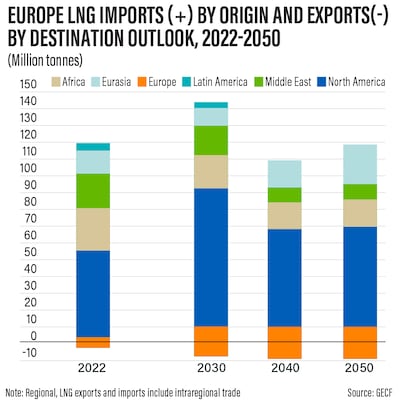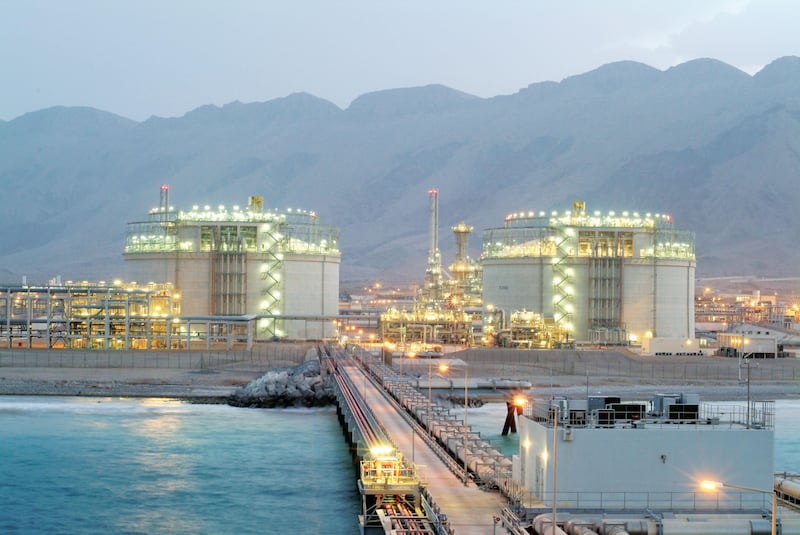Oman LNG has signed a 10-year liquefied natural gas supply agreement with Shell, as the state-owned Omani company optimises its operations to meet global consumer demand.
The deal involves up to 1.6 million metric tonnes of LNG a year and will start from next year, the Oman News Agency reported on Wednesday.
The supply agreement “contributes to opening new horizons for co-operation in global markets”, said Oman LNG chief executive Hamad Al Numani.
The deal also complements the two companies' agreement in October to extend their partnership beyond 2024 as the demand for natural gas continues to grow amid green transition efforts.
As part of that amended agreement, Shell Gas, a unit of London-based Shell, remains the largest private shareholder in Oman LNG, with a 30 per cent shareholding. It will continue its role as technical adviser.
The new deal “strengthens Oman LNG's reputation as a reliable provider of LNG and its … ability to efficiently manage business operations to provide safe and sustainable energy to customers around the world”, Mr Al Numani said.
LNG is vital to the energy strategy of Oman, the second-largest exporter of the commodity in the Middle East after Qatar.
Global LNG trade grew by 1.8 per cent to 404 million tonnes last year, from 397 million tonnes in 2022, as tight supplies constrained the sector's growth, Shell said in its latest LNG outlook report.
Demand for LNG is projected to more than double by 2040, as industrial coal-to-gas switching gathers pace in China, and South Asian and South-East Asian countries use more LNG to support their economic growth, it said.
Improving LNG technology has also opened up possibilities by allowing gas to be transported in tanker ships, much like oil, although the infrastructure required is complex and expensive, and a pipeline network is still needed to distribute the gas to end users, according to the International Energy Agency.
China, the world's biggest coal consumer, is projected to increase the use of natural gas in its primary energy mix to 12 per cent by 2030, from 8.7 per cent in 2020.
India, the second-largest coal consumer, aims to raise the share of natural gas in its total energy mix to 15 per cent by 2030, from about 6 per cent.
Europe is aiming to replace Russian gas supplies with LNG shipments from the US and the Middle East.

Oman LNG in August signed an agreement with Germany's Securing Energy for Europe to supply 400,000 tonnes of LNG a year, starting from 2026, based on a four-year contract.
The new Oman LNG-Shell agreement is “an important addition to the company’s stock of liquefied natural gas and integrated gas, and helps ensure its ability to meet the growing demand for flexible and reliable energy from its global customer”, said Walid Hadi, chairman of the board of directors of Shell in Oman.
Oman LNG operates a complex in the sultanate's north-eastern coastal city of Sur, capable of producing 11.5 million metric tonnes annually.







